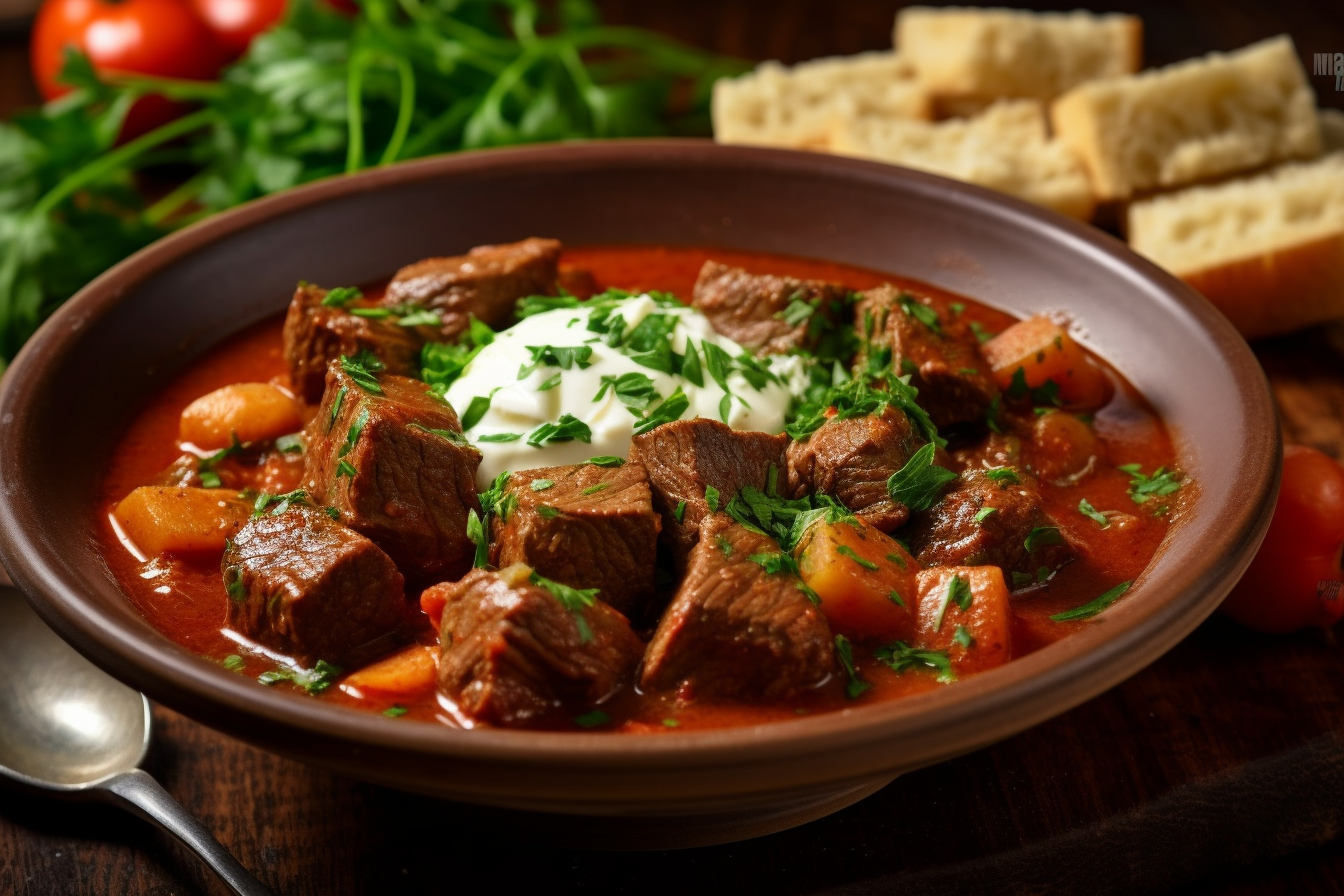Discover the Hearty Delight of Hungarian Goulash
Explore the world of Hungarian Goulash in our latest post. Learn about its history, why locals love it, its unique ingredients and preparation, and its cultural significance in Hungary. Dive into the unique taste and texture of this hearty European dish that has stood the test of time.

If you're a foodie, you're probably on the lookout for new and exciting dishes to try out. And if you're particularly fond of European cuisine, you'll want to add Hungarian goulash to your list. This hearty stew is a staple dish in Hungarian cuisine, with a long history and cultural significance. In this blog post, we will take a deep dive into the world of Hungarian goulash, from its origin, ingredients, and preparation, to its unique taste and cultural symbolism.
The history behind Hungarian Goulash
First and foremost, let's talk about where Hungarian goulash comes from. The dish has its roots in Hungary, as it was a popular dish among herdsmen who used to keep cattle and sheep on the vast, open plains of Hungary. The dish has evolved to become the national dish of Hungary, with each region and family having their unique take on the recipe.
But what is the history behind the dish? Goulash has been a staple in Hungary since the 9th century, where it served as a meal for the pastoral nomads who roamed the area. Over the years, the recipe has undergone modifications, but the basic elements have remained: meat, paprika, onions, and potatoes.
Why do locals love this dish?
The locals adore this dish for a variety of reasons. It is a hearty and comforting meal with a rich and unique flavor, perfect for colder weather and the winter months. Its versatility makes it a staple in many Hungarian homes, particularly during holidays and family gatherings.
What is Goulash made of?

Speaking of the ingredients, what is Hungarian goulash made of? The dish is typically prepared using chunks of beef, garlic, onions, carrots, potatoes, and of course, paprika. The use of paprika is what lends the dish its distinctive flavor and reddish-brown color.
When it comes to the preparation time of Hungarian goulash, the dish is known for taking a while to cook. This is because the meat needs to cook slowly to become tender and flavorful. Typically, the dish takes around two to three hours to cook, but some families prefer to cook it for longer to create an even richer and more robust flavor.
What is the cultural significance of Goulash?
As for cultural significance, Hungarian goulash has always been seen as a symbol of Hungarian identity and culture. It was traditionally eaten by Hungarian herdsmen, who were seen as the embodiment of the nation's identity and history.
What does Goulash taste like?
And finally, let's talk about what makes Hungarian goulash so unique: its taste and texture. The dish is bursting with flavor, thanks to the generous use of paprika, which lends a tangy and slightly spicy flavor. The addition of vegetables such as potatoes and carrots gives the dish a slightly sweet and earthy taste, while the chunks of beef are succulent and tender. The texture of the dish is thick and hearty, perfect for soaking up with crusty bread or dumplings.
Conclusion
Hungarian goulash is a dish that has stood the test of time, remaining a go-to meal for many Hungarians to this day. Its rich history, cultural significance, and hearty flavor make it a must-try for anyone interested in authentic European cuisine. Whether you're preparing it for your next family meal or trying it out at a Hungarian restaurant, you will not be disappointed.